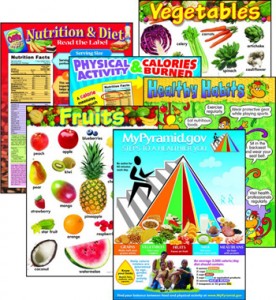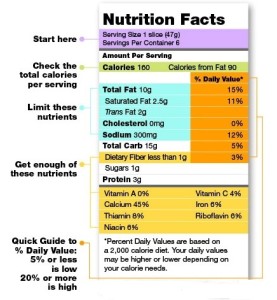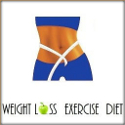-
Diet Help: Nutrition Charts for Weight Loss
Thursday, March 27th, 2025by Kelly Peters, Diet Counselor
Looking for a diet tip that works? If you want to lose weight in a natural way, then try keeping track of what you eat by charting your nutrition each day. Nutrition charts for weight loss are one of the best kinds of diet help available for people who are trying to lose fat without taking pills or supplements.
A low-fat, nutritionally-balanced diet – when combined with and regular exercise – is the best way to keep your weight in the normal range. By eating a healthy diet you can your body strong and healthy, which provides you with the energy to exercise and keep fit.
Counting Calories with a Nutrition Chart
The most efficient way to control your calorie intake is to understand how much fat is contained in the foods you eat. A nutrition chart can help you understand which healthy foods you need to eat each day in order to practice calorie control.
 The best nutrition chart should contain all the information you need in easy-to-understand terms. Charting one’s nutrition helps you understand how many calories there are in a typical serving of a particular food.
The best nutrition chart should contain all the information you need in easy-to-understand terms. Charting one’s nutrition helps you understand how many calories there are in a typical serving of a particular food. Most charts for nutrition show foods listed in alphabetical order, while others have them divided into food groups (along with pictures) for easier understanding. Charts that show the nutritional benefits of each food make it a lot easier to count calories and lose weight.
How to Use a Nutrition Chart
Using a nutrition chart is easy – all you have to do is find a particular food on the chart, move across to the next column and read the calories contained in a standard serving.
The amount of fat contained per serving should also be listed, specifically saturated vs. unsaturated fats. If you want to succeed with your diet, you should try to avoid saturated fats as much as possible.
Another key to successful weight loss is understanding the amount of protein contained in a particular food. Keep in mind that protein is an essential nutrient for balanced and healthy nutrition. Protein aids in the formation of muscle, and the more muscle you have, the more calories you are able to burn.
Online Nutrition Charts
Nutrition charts online should also give you good information about the pros and cons of carbohydrates on your body. A balanced intake of carbohydrates is important in order to manage the body’s energy reserves. Too much carbohydrate can lead to weight gain, while too little may lead to a lack of energy.
Websites with nutrition charts can also inform you about the amount of cholesterol present in particular foods. While cholesterol is vital to the body’s nervous system and hormone production, too much cholesterol consumption can lead to clogged arteries and heart disease.
Nutrition charts can help you to better understand healthy and balanced nutritional requirements, while losing weight at the same time. They are great motivation to lose weight. If you follow the recommendations and guidelines listed, you should be able to reach your diet goals in a healthy and natural way.
How to Read Nutrition Label Information
 Begin by taking note of the size of a single serving and how many servings there are per package or container. Next, check the total number of calories per serving.
Begin by taking note of the size of a single serving and how many servings there are per package or container. Next, check the total number of calories per serving. Keep in mind that serving size and how many servings you will actually be consuming are often different. Many people eat double the serving size listed, which corresponds to double the calories and fat.
The % DV (Daily Values) section gives the percentage of each nutrient contained in a single serving, as it relates tot he recommended daily amount. As a general rule of thumb, if you want to consume less saturated fat, cholesterol or sodium, select foods with a lower % DV.
As far as % Daily Values go, below 5 percent is deemed to be low. If you want to consume more of a nutrient, eat foods with a higher % DV. 20 percent or more is deemed to be high.
The information shown on Nutritional Value labels is based on 2,000 calories per day. Depending on your age, particular body type and level of physical activity, may need to consume less (or more) than 2,000 calories.
In general terms, as you think about the amount of calories in a food per serving, remember that for a 2,000-calorie diet 100 calories per serving is considered moderate, while 400 calories or more per serving is considered high.
In addition to the Nutrition Facts label, many foods today also feature nutrient content claims made by the manufacturer. These claims are typically included in advertisement for the foods or on the food packages themselves.
For example, when a manufacturer claims a food is “free” of something, it means a food has the least possible amount of the specified nutrient. The terms “Very Low” and “Low” mean the food has a bit more of a particular ingredient than foods that are labeled “Free.” The terms “Reduced” or “Less” mean a food has 25% less of a particular nutrient than the regular version of the same food.
(published August 11, 2011)


